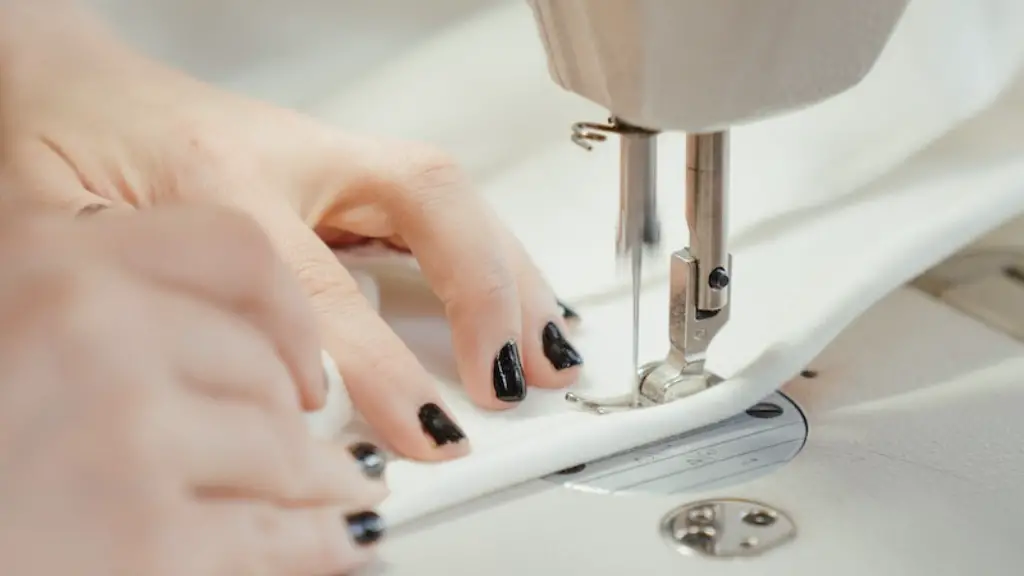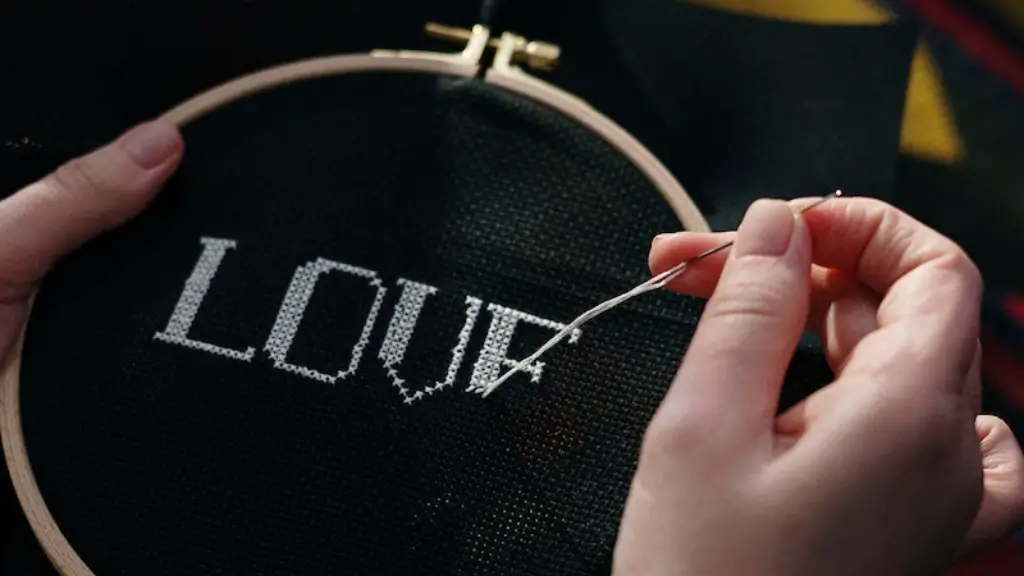Quilting is one of the oldest forms of crafting and it has been used by cultures from all over the world for centuries. Over the years, quilting has evolved from a solely hand-sewn process to one that can now be done with a regular sewing machine. Although sewing machines can be intimidating, with a few tips and techniques you can be quilting with your machine in no time.
Before you start quilting with your sewing machine, there are a few essential tools that you’ll need to have on hand. You will need to have a sewing machine that has an automatic needle threader and a built-in walking foot. You will also need to have a quilting ruler, quilting tape, and a rotary cutter.
Once you have all the necessary tools and supplies, you can begin your first quilting project. Start by laying out your fabric pieces in the desired quilt pattern on a flat surface. Make sure that the pieces are lined up accurately, then use quilting tape to hold the fabric in place. Use the quilting ruler to make sure that the pieces are placed properly. Then, use the rotary cutter to cut the pieces to size.
Now that you have your fabrics cut, you can begin to assemble the quilt top. You can do this by joining two pieces together by stitching a ¼ inch seam allowance around the edges. Another way to join two pieces together is by using an invisible zipper foot on your sewing machine. It’s important to make sure that the seams are even and secure so that the quilt doesn’t come apart when it is washed.
Once the quilt pieces are assembled, you can start assembling the quilt top. This is done by sewing the pieces together in rows and then sewing the rows together. Again, it’s very important to make sure that the seams are secure, so be sure to backstitch at the start and end of the seams. You will also want to press the seams flat before stitching the next row.
Now that the quilt top is complete, it’s time to layer the quilt. You will need to use a quilting batting and backing fabric for this part. Start by laying out the backing fabric, then place the batting on top of the backing. Next, place the quilt top on top of the batting, right side up. All the layers should then be pinned together.
At this point, you can begin the quilting process. Most quilts are quilted using a straight-stitch. You will simply need to use your sewing machine to stitch in a defined pattern on the quilt. It is a good idea to use quilting templates and a walking foot to help ensure that the stitching lines are even. Once the quilting is complete, you can trim the excess backing fabric.
The next step is to attach the quilt binding. This is done by sewing the binding fabric around the edges of the quilt. Start by stitching the binding to the back of the quilt by hand. Then, use your sewing machine to attach the binding to the front of the quilt. You will also want to press the binding to make sure that it is nice and flat.
And that’s it! All that’s left to do is to enjoy your newly created quilt. You can now proudly display and use your quilting creation, knowing that you’ve done it all with your regular sewing machine. Happy quilting!
Making a quilt sandwich
One of the most important elements of quilting is creating a quilt sandwich. This involves layering a quilt top, batting, and backing fabric in the right order. This layering is key in ensuring that the quilt will hold together when it is washed. The first step in making a quilt sandwich is to lay out the backing fabric on a flat surface. Make sure that it is even and smooth. Next, place the batting on top of the backing fabric. Again, make sure that the batting is flat and even. Then, place the quilt top, right side up, on top of the batting.
Once all the layers are in place, use quilting tape to hold the layers in place. This will help to keep the layers from shifting as you quilt. Finally, when the layers are all secure, you can begin the quilting process. It is important to use the right tools and techniques when quilting, so be sure to read up on quilting tips before beginning.
Choosing fabrics and colors
Choosing the right fabric and colors for your quilts can be a daunting task. There are a variety of fabrics on the market and choosing the right one can be challenging. In general, when it comes to fabric, you will want to use 100 percent cotton. Cotton is a natural fabric that is strong and durable, which makes it ideal for quilting. It is also important to choose fabrics in a variety of colors and patterns. Quilting is a great way to showcase beautiful fabrics and create a work of art.
When it comes to color, there are a few things to keep in mind. It is important to choose fabrics that will complement each other and create a harmonious color palette. Also, make sure that the colors you choose will look good both individually and together. As a general rule, try to steer clear of overly bright colors and choose fabrics with subtle color variations. This will help create a unified quilt top.
Different quilting techniques
Quilting offers a variety of techniques and there is something for everyone. One of the most popular quilting techniques is straight-line quilting, which is often used for bed quilts and patchwork quilts. This technique involves stitching lines in a defined pattern on the quilt top. There is also free-motion quilting. This technique involves stitching designs on the quilt top with a free-motion foot attachment. This type of quilting allows for more creative freedom and is often used on art quilts.
Another popular quilting technique is machine appliqué. This involves stitching pieces of fabric to the quilt top in a decorative manner. This technique is often used to create images and patterns on the quilt top. Finally, trapunto quilting is a type of quilting that involves creating raised areas on the quilt top. This technique is often used to add texture and dimension.
Preparing fabric for quilting
Before beginning any quilting project, it is important to wash and press the fabric. Washing the fabric will help ensure that the quilt top will not shrink after it is washed. It is also important to press the fabric before cutting to help ensure accuracy. Pressing the fabric will help to set the fabric in its original shape, which will make the cutting process easier and more precise.
When you are preparing your fabric for quilting, it is important to use the correct tools. A rotary cutter is the best tool for cutting fabric for quilting. It is also important to use a quilting ruler and quilting tape to ensure accuracy when cutting. These tools will help to ensure that the quilt pieces are sized correctly and that the seams are even.
Quilting for beginners
Quilting can seem intimidating at first, but it doesn’t have to be. With the right tools and supplies, quilting with a regular sewing machine is a relatively easy process. There are many quilting tutorials and classes available online that can help you get started. Additionally, there are many quilting kits on the market that come with detailed instructions. With a few practice projects and some guidance, you can be quilting with your sewing machine like a pro in no time.
Quilt binding
Quilt binding is the process of stitching fabric around the edge of a quilt. This step is important for making sure that the quilt stays together when it is washed and used. Quilt binding can be done by hand or with a sewing machine. When hand-stitching the quilt binding, use small, even stitches and make sure that the binding is pulled tight before you stitch it. When using a sewing machine, attach a binding foot to the machine to help ensure that the binding is even and secure.
When attaching the quilt binding with a sewing machine, start stitching from the back of the quilt and work your way to the front. Make sure to backstitch at the start and end of each edge to ensure that the quilt binding is secure. Finally, press the binding to make sure it is nice and flat.





